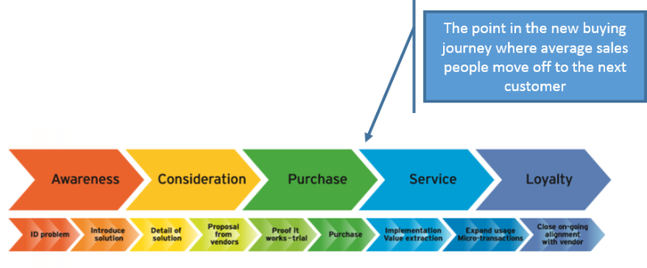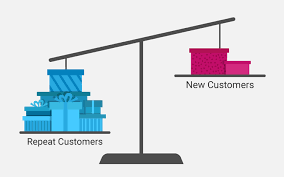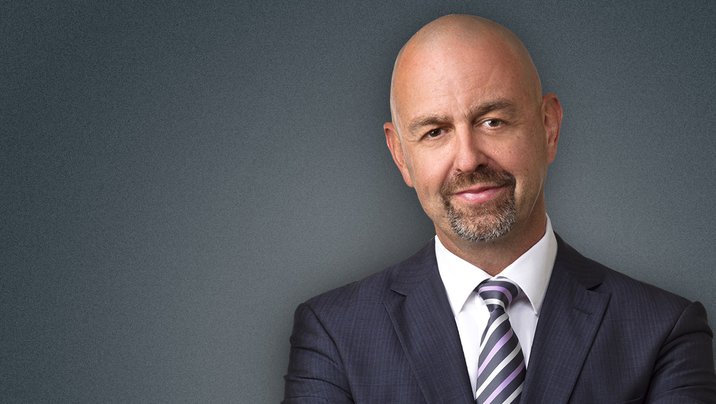Why sales people MUST stop focusing on 'net new' customers.
If you want to survive and thrive in the new customer-pull business era, then protect and grow (in-market growth) your existing customer base as a priority. Focus on delighting your existing customers – giving them exactly what they want and expect - now and into the future. If you lose those prized existing customers, then finding new customers to replace the defectors will be more difficult than you could have ever imagined.
I recently wrote a blog post that speaks to the fact that increasing numbers of B2B sales people are now under-performing. We all know that this trend is due to the fact that never before has the sales role been more complex, dynamic and misunderstood. Not surprisingly, lots of sales people no longer seem to know where they should focus their activities and attention.
Acquisition versus Retention:
The balance between customer acquisition versus customer retention has always been a delicate one, and every sales person knows that it’s much easier to sell something new to an existing customer than it is to find a new customer. Yet we are still witnessing what is now a dangerous fixation with the shiny new logo's that businesses love to display to the world. But are you too focused on finding new customers?
This relentless pursuit of ‘net new’ customers has blinded many vendor sales leaders to the fact that customer retention is now more important than ever before in this new ‘customer-led era’. In my experience, there currently exists a gross imbalance in this area with too many sales teams focused on the pursuit of net new logos – at the expense of the sometimes massive sales opportunity that is sitting right in front of them.
My own career in sales has been horribly skewed towards finding net new customers as opposed to building deeper and longer lasting relationships within existing accounts. I honestly believe that the companies that I have worked for left large sums of money on the table thanks to this tyranny of short-termism. In the old days, vendors were driven almost entirely by how ‘the street’ would interpret their quarterly results. The message being that “new licence revenue is what drives our share price….so, it’s the main growth indicator”. As a sales person, my remit (and in some cases my comp plan) was always clear…find and close net new customers. Back then, demand was high and competition was low, and so this strategy was understandable. But alas, the game has changed!
Putting aside the usual suspects of increased competition, commodification and the growing trend towards buyer self-service, the following points shine a light on the need for sales people to re-focus on existing customers:
- The new buying journey now extends well past the initial purchase. Buyers expect their vendors to take them on a long term journey that adds value well beyond the first purchase. So What?: hit & run selling is no longer acceptable to buyers.
- In line with point 1, customer expectations of vendors has risen dramatically with one stating to me recently that “if we don’t get an ‘arms-around’ experience, both pre and post-sale, then we simply go to an alternative supplier”. So What?: neglect your existing customers at your peril. They are already looking for reasons to cull you from their vendor stack.
- The vast majority of businesses (small, medium & large) are now searching for ways to do ‘more business with less vendors’. Accenture’s 2016 Procurement Strategy Report states that “companies will rely heavily on a small group of strategic suppliers to help reduce costs and risk, as well as boost the top line through more effective innovation”. So What?: it’s getting harder to acquire net new customers, because customers want less vendors – not more!
- Lowering the cost of acquisition means that buyers are often looking to their existing suppliers to help them streamline and automate the process of engagement and transactions. So What?: if you fail to assist your existing customers to lower their costs then you are ripe for disruption and displacement by a savvy competitor with a new model.
- The proliferation of consumption based models (cloud and MSP) now means that the old days of hit & run selling have been replaced by what I call the ‘extended buying journey’ where customers demand a more long term and equitable relationship with suppliers. So What?: the old sales models are fast becoming extinct, and sales people will have to get used to investing more time and resource into each and every existing customer.

It also strikes me that there is often a disconnect between the vendor sales and finance departments because focusing on acquisition, at the expense of retention, rarely takes into account the critically important question of: how should we balance revenue growth against margin improvement? Chasing net new customers and discounting heavily to win them nearly always flies in the face of important margin and profit considerations, not to mention the substantial Cost of Goods Sold (COGS) associated with net new customer acquisition, nor the opportunity cost that is often associated with overlooking your existing customers.
Supporting these assertions, I recently stumbled upon an excellent article by Gerald Adolph & Kim David Greenwood where the authors posit that there are in fact 3 areas where businesses can find growth:
- In-market growth: seeking out new growth opportunities among your existing customers in core markets.
- Near-market expansion: pursuing opportunities in unfamiliar sectors or with new products. Expansion through adjacencies.
- Disruptive growth: responding to dramatic change with entirely new business models and capabilities.
Do yourself a favor and read this article: (http://bit.ly/1NgrOu7),
Naturally enough, it will always depend on where your specific business is within your industry life-cycle as to where you focus your growth strategy (and therefore your sales execution). In my opinion, this balance requires a capabilities-driven approach — making the most of you core capabilities and what you already do well. Sales people must always seek to find the right balance to achieve optimal growth, profits, and sustainability and finding that balance is NOT EASY. Vendor sales leaders that are oblivious to these important concepts – many of whom remain obsessed with net new customer acquisition - are missing the low hanging fruit in their installed customer base.

According to HBR, "increasing customer retention rates, can increase profits by 25% to 95%". So, as a sales person, if you want to survive and thrive in the new customer-pull business era, then my suggestion is to protect and grow (in-market growth) your existing customer base as a priority. Focus more effort on delighting your existing customers – giving them exactly what they want and expect - now and into the future. Because if you lose those prized existing customers, then finding new customers to replace the defectors will be even more difficult than you could have ever imagined.

